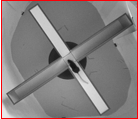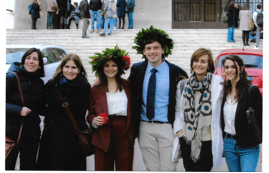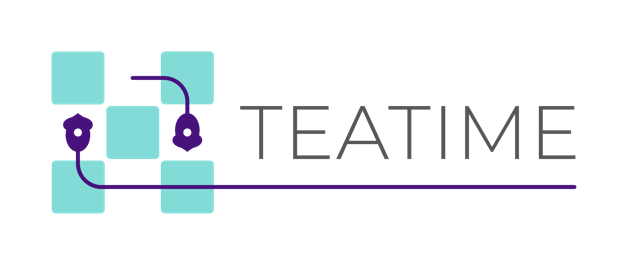Group Leader: Silvia Mandillo
Topic: Neurobiology
We conduct in-depth behavioral analysis of inbred and mutant mouse strains to develop genetic models of neurodegenerative and psychiatric diseases (e.g. Parkinson’s Disease, Amyotrophic Lateral Sclerosis, Myotonic Dystrophy type 1, Schizophrenia, Autism Spectrum Disorders, anxiety and depression). We study motor and cognitive functions as well as social and emotional behaviors by using automated systems and ethologically based direct behavioral observations.
A careful and in-depth analysis of behavior is pivotal for the development of animal models of neurodegenerative and psychiatric diseases. This can be achieved through the use of sophisticated and possibly automated tests. Among the most used animal models, the mouse has gained great relevance because of the availability of genetically modified mouse lines that allow the study of the pathophysiological mechanisms of human diseases, both sporadic and familial.
Neuromuscular and neuropsychiatric disorders require a wide range of phenotypical analysis to pinpoint various aspects of behavior that could reflect as faithfully as possible the human symptoms, especially if detected at the early stages. It is also important that these analyses are conducted on mice of both sexes since most of the above mentioned diseases occur with a different incidence in males and females.
We already investigated in details the behavioral phenotype of mouse lines important for the study of Parkinson’s disease (Marazziti et al., 2004; Marazziti et al., 2007; Mandillo et al., 2013) and cerebellar functions (Marazziti et al., 2013) and we largely contributed to EU-funded projects focused on the set-up, validation and optimization of standard operating procedures for the study of mouse mutant phenotypes (Brown et al., 2005; Mandillo et al., 2008; Simon et al., 2013; Mandillo et al., 2014). Currently, we are evaluating specific behavioral aspects of mouse models of ALS (Garbugino et al, 2018; La Cognata et al. 2021; Golini et al., 2020, 2023) and Myotonic Dystrophy type 1 (Cardinali et al 2021; Golini et al, 2023). More recently we are involved in an European network for the implementation and dissemination of home cage monitoring tools (COST Action TEATIME).
Recent Projects
- COST Action CA20135 –TEATIME (2021-2025). “Improving biomedical research by automated behaviour monitoring in the animal home-cage”. https://www.cost.eu/actions/CA20135/; cost-teatime.org
- Telethon Grant Project 2019, #GGP19035 (2020-2022). Gene editing in Myotonic Dystrophy type 1: assessment of efficiency, safety and therapeutic effect of CTG-repeat deletion in a mouse model of disease. PI: G. Falcone
- Behavioral phenotyping and Standard Operating Procedures validation within the activities of the International Mouse Phenotyiping Consortium (IMPC)
- PRIN 2017 “Sensory Decays and Aging” (SensAging).
- Analysis of welfare and behavior by using the home cage monitoring Digital Ventilated System DVC® (Aut. Min. Salute N° 892/2017-PR)
- Validation of potential drug targets for ALS therapy (Aut. Salute N° 914/2016-PR)
- Effects of voluntary exercise in the SOD1*G93A low-copy ALS mouse model (Aut. Min. Salute N° 166/2015-PR)







Key Pubblications
- Golini E, Marinelli S, Pisu S, De Angelis F, Vacca V, Rava A, Casola I, Laurenzi G, Rizzuto E, Giuliani A, Musarò A, Dobrowolny G, Mandillo S. Wheel Running Adversely Affects Disease Onset and Neuromuscular Interplay in Amyotrophic Lateral Sclerosis Slow Progression Mouse Model. Curr Neurovasc Res. 2023;20(3):362-376. doi: 10.2174/1567202620666230823095922.
- Golini E, Rigamonti M, Raspa M, Scavizzi F, Falcone G, Gourdon G, Mandillo S. Excessive rest time during active phase is reliably detected in a mouse model of myotonic dystrophy type 1 using home cage monitoring. Front Behav Neurosci. 2023 Mar 2;17:1130055. doi: 10.3389/fnbeh.2023.1130055.
- Cardinali B, Provenzano C, Izzo M, Voellenkle C, Battistini J, Strimpakos G, Golini E, Mandillo S, Scavizzi F, Raspa M, Perfetti A, Baci D, Lazarevic D, Garcia-Manteiga JM, Gourdon G, Martelli F, Falcone G. (2021). Time-controlled and muscle-specific CRISPR/Cas9-mediated deletion of CTG-repeat expansion in the DMPK gene. Molecular Therapy: Nucleic Acids, 27: 184-199.
- La Cognata V, Golini E, Iemmolo R, Balletta S, Morello G, De Rosa C, Villari A, Marinelli S, Vacca V, Bonaventura G, Dell’Albani P, Aronica E, Mammano F, Mandillo S, Cavallaro S. (2021). CXCR2 increases in ALS cortical neurons and its inhibition prevents motor neuron degeneration in vitro and improves neuromuscular function in SOD1G93A mice. Neurobiol Dis. 160: 105538.
- Golini E, Rigamonti M, Iannello F, De Rosa C, Scavizzi F, Raspa M, Mandillo S (2020). A non-invasive digital biomarker for the detection of rest disturbances in the SOD1G93A mouse model of ALS. Frontiers in Neuroscience 14: 896. doi: 10.3389/fnins.2020.00896
- Garbugino L, Golini E, Giuliani A, Mandillo S (2018). Prolonged voluntary running negatively affects survival and disease prognosis of male SOD1G93A low-copy transgenic mice. Front. Behav. Neurosci. 12: 275. doi.org/10.3389/fnbeh.2018.00275
- Bitetti A, Mallory AC, Golini E, Carrieri C, Carreño Gutiérrez H, Perlas E, Pérez-Rico YA, Tocchini-Valentini GP, Enright AJ, Norton WHJ, Mandillo S, O’Carroll D, Shkumatava A (2018). MicroRNA degradation by a conserved target RNA regulates animal behavior. Nat Struct Mol Biol., 25:244-251. doi: 10.1038/s41594-018-0032-x
Research group

Researchers
Elisabetta Golini
Silvia Mandillo
Programs & resources
- COST Action CA20135 –TEATIME (2021-2025). “Improving biomedical research by automated behaviour monitoring in the animal home-cage”. https://www.cost.eu/actions/CA20135/; cost-teatime.org
- Project Telethon 2019 #GGP19035 Gene editing in Myotonic Dystrophy type 1: assessment of efficiency, safety and therapeutic effect of CTG-repeat deletion in a mouse model of disease. PI: G. Falcone (IBBC).
- International Mouse Phenotyping Consortium-IMPC (2012- ). “Building a truly comprehensive functional catalogue of a mammalian genome”. www.mousephenotype.org
- INFRAFRONTIER2020 (2017-2020). Towards enduring mouse resources and services advancing research into human health and disease. European Commission H2020.
- Research Grant of the Italian National Research Council-CNR (2012-2017). Project “Invecchiamento” (Ageing), Subproject 1-Molecular mechanisms of aging and neurodegeneration. WP1.8 Transgenic models of brain ageing and longevity.
- INFRAFRONTIER-I3 (2013-2016). Development of mouse mutant resources for functional analyses of human diseases-Enhancing the translation of research into innovation. European Commission FP7-Health.
- PhenoScale (2009-2011) “Large-scale, high-throughput automated systems for phenotyping mouse models of human disease”. European Commission funded program (FP7-Health) # 223263.
- EUMODIC (2007-2011) “The European Mouse Disease Clinic: a distributed phenoptyping resource for studying human disease”, European Commission funded program (FP6-LIFESCIHEALTH), # LSHG-CT-2006- 037188.
- EUMORPHIA (2003-2006) “Understanding human disease through mouse genetics”, European Commission funded program (FP5), # QLG2-CT-2002- 00930


Press release
Nature Research Advertisement Feature
Automated mouse cages help reveal subtle disease signs
